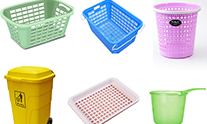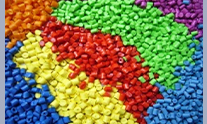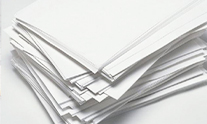- Natural Barium Sulfate
- Precipitated Barium Sulfate
- Talc Powder
- Calcium Carbonate
- Titanium Dioxide
- Lithopone powder
- BaSO4 Filler Masterbatch
- Silicon Powder
- Kao Lin
- Sodium Sulfide
- Sodium Sulphate
- Sodium Sulphate Masterbatch
CALCIUM CARBONATE
Chemical Formula: CaCO3
CAS No.: 471-34-1
EINECS No.: 207-439-9
H.S. Code: 28365000.00
TECHNICAL DATA SHEET
Model Number | XM-L2000-1 | XM-L3000-2 | XM-1250 | XM-SL-2200 | XM-L2300-1 | XM-L2500-2 | XM-L2800-2 | XM-L3000-2 | XM-C100 |
Fineness (mesh) | 2000 | 3000 | 1500 | 1500 | 2300 | 2500 | 2800 | 3000 | 1250 |
D97 (um) | 20 - 23 | 1.9 | 11.3 | 14 | 9-10 | 6.5 | 5.8 | 5.2 | 13.0 |
Whiteness (%) | 97 | 98 | 96.5 | 97.6 | 98 | 98 | 98.3 | 98 | 98 |
Moisture (%) | 0.3 | 0.2 | 0.2 | 0.3 | 0.2 | 0.02 | 0.3 | 0.3 | 0.2 |
CaCO3 | 99.2 | 99.8 | 98.2 | 98.8 | 99 | 99 | 99.2 | 99.5 | 99.3 |
SiO2 | 0.02 | 0.02 | 0.02 | 0.02 | 0.02 | 0.02 | 0.02 | 0.02 | 0.02 |
325 Mesh Residue On | 0.01 | 0.02 | 0.01 | 0.01 | 0.01 | 0.01 | 0.01 | 0.01 | 0.01 |
Loss on Ignition (%) | 41.5 | 43.5 | 43.5 | 43.5 | 41.5 | 41.5 | 42.5 | blue | 42.5 |
PH Value | 7.5 - 9.5 | 7.5 - 9.5 | 7.5~9.5 | 7.5~9.5 | 7.5~9.5 | 7.5~9.5 | 7.5~9.5 | 7.5~9.5 | 7.5~9.5 |
Oil Absorption (g/100g) | 20 | 30 | 23 | 22 | 24 | 28 | 29 | 30 | 20 |
HCL Insoluble (%) | 0.01 | 0.01 | 0.01 | 0.01 | 0.01 | 0.01 | 0.01 | 0.01 | 0.01 |
APPLICATION:
ADVANTAGES:
1. Papermaking
In the paper industry, calcium carbonate is valued worldwide for its high brightness and light scattering characteristics, and it is used as an inexpensive filler to make bright opaque paper. The filler is used at the wet-end of paper making machines, and calcium carbonate filler makes the paper bright and smooth.
As paper filler, it not only reduce the pulp for saving cost, and helps in sizing of paper at neutral and alkaline PH. In the manufacturing of printing paper, fillers such as ground or precipitated calcium carbonate (GCC or PCC) are normally used to lower the paper production costs and improve the paper opacity and brightness. Here, the calcium carbonate component takes up to 80% of the paper by weight.
2. Plastic
Calcium carbonate (CaCO3) is one of the most popular mineral fillers used in the plastics industry. It is widely available around the world, easy to grind or reduce to a specific particle size, compatible with a wide range of polymer resins and economical. As an additive in plastic compounds, CaCO3 helps decrease surface energy and provides opacity and surface gloss, which improves surface finish. In addition, when the particle size is carefully controlled, CaCO3 helps increase both impact strength and flexural modulus (stiffness).
Calcium carbonate forms a kind of skeleton structure inside plastic products, and greatly improves the size stability of plastic products. It can improve product hardness, electrical performance, flame retardant performance, heat resistance, and processing performance. It can also improve products' luster and surface regularity.
3. Coating
The addition of calcium carbonate to paint can cause the relatively dense lithopone to stay in suspension and not sink to bottom. It can increase the whiteness and luster of the paint film without reducing covering ability. These performance-enhancing qualities have ensured the large-scale acceptance of calcium carbonate by the paint industry. It can prevent settling in latex paints, and can reduce the amount of dispersant needed. The use of calcium carbonate that has been activated by treatment with a chelated paint dispersion and coupling agent can significantly increase the paint's color intensity and reflection, and thereby enhance the luster, and also improve covering ability, abrasion resistance, adhesion, impact resistance, and flexibility.
Calcium carbonate is used even more extensively in the aqueous paint industry. It can prevent pigment settling, promote good dispersion, and improve luster.
Ground calcium carbonate (GCC) is commonly used in a number of paint and coating applications. It is used as an extender, an agent to either reduce or enhance gloss, an extender / spacer for titanium dioxide, a rheology modifier and as a paint and coating additive to densify the product.
4. Rubber
Calcium Carbonate used can cut costs, and it can improve the heat resistance, size stability, and hardness of the base material. Calcium carbonate is the filler first used by the rubber industry, and is still used in the greatest quantity. Adding large amounts of calcium carbonate to rubber can increase the product's volume, which conserves the use of expensive natural rubber and thereby cuts costs.
The addition of calcium carbonate to rubber increases tensile strength, abrasion resistance, and tear resistance even more than does vulcanization. Calcium carbonate also has a significant reinforcing effect in both natural and synthetic rubber, and can improve consistency. Calcium carbonate is used in such small rubber products as oil seals and auto parts, and also in such large products as tires, tape, and rubber hoses. Not only is calcium carbonate used alone as a reinforcing filler, when needed, it may also be used together with such other fillers as carbon black, white carbon black, clay, and titanium white to achieve reinforcing, filling, coloring, improving workability, enhancing product performance, and reducing latex content. Calcium carbonate may also partially replace such more-costly white fillers as white carbon black and titanium white.
Ground calcium carbonate is used in a wide variety of rubber applications as both an extender and detacktifying agent. In other calcium carbonate rubber applications, it can add stiffness or provide abrasion resistance.
KEY FEATURES:
● High whiteness
● High purity guaranteed
● Consistent particle size distribution
● Good dispersity and affinity
● Non-toxic and magnetic
● Good rheological properties
● Good flow properties
● Improves thermal stability
● Efficient cost-saving
● Improves mechanical properties
PACKING DETAILS:
Factory standard: 25kg/bag, plastic woven bag with lining.
If Pallet needed: wooden pallets, 1~1.2MT per pallet.
20 pallets in one 20’GP container. Pallets are PE wrapped and strapped.




